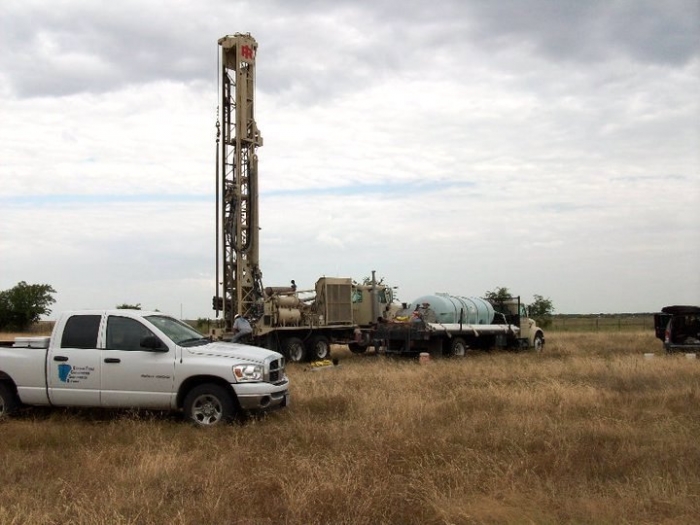Groundwater district declares stage two drought

Contributed/CTGCD
The Central Texas Groundwater Conservation District, responsible for monitoring wells in the unincorporated areas of Burnet County, has asked rural residents to reduce their consumption by 10 percent due to drought-like conditions.
By Lew K. Cohn/Managing Editor
The Highlander •
Burnet County citizens are being asked to reduce their overall water usage to help conserve water as the Central Texas Groundwater Conservation District has initiated Stage 2 of its Drought Management Plan.
Central Texas GCD general manager Mitchell Sodek said a combination of drought indexes, such as the Palmer Hydrological Drought Index and US Drought Monitor, shows “moderate to severe drought conditions” throughout the district, while monitor wells indicate declining water levels across all aquifers in the region, resulting in a need for conservation to reduce impact on aquifers.
“The District Drought Management plan primarily relies on voluntary compliance to achieve reduction in pumping pressure on the aquifer,” Sodek said. “Since conditions are so dry, there is increased pressure put on the aquifer for outdoor watering purposes, and it is this increased pressure, rather than the actual lack of rainfall, that leads to lowering water levels.”
Put into effect on July 20, Stage 2 requests that anyone owning or operating a well within Burnet County voluntarily reduce total usage by at least 10 percent. This applies to all organization or persons, public or private, owning or operating wells within Burnet County, regardless of purpose of use, size, capacity, date drilled, ownership, or the exempt or non-exempt status of a well.
Sodek said the district could see a further move to Stage 3 “if conditions and water level trends remain the same for the next few months.”
“If pumping pressure is reduced on the aquifers, and rainfall that leads to recharge occurs in the fall and winter, we should see conditions improve,” he added.
While drought conditions are worsening in Central Texas, Sodek said this year's drought is “still relatively short lived and is not yet to the levels we saw in the 2011 to 2014 drought.
“Aquifer levels tend to lag behind surface drought conditions and therefore there is some delay in the onset of hydrological drought,” Sodek explained. “This drought is similar to the start of the 2011 drought, although not as severe, in that both started with a dry fall and winter pattern, which is usually the best time for the aquifers to recharge and recover from spring and summer pumping.
“The district has a very complex aquifer system and certain aquifers and areas will be more effected than others. The district has a monitor well program of more than 60 wells in six different aquifers that measure the static water levels daily. If well owners are experiencing water shortages, we ask that they notify the district so that we can measure the water level and track areas that may be experiencing more severe issues.”
For more information and up-to-date measurements of monitor well levels and springflow, please visit centraltexasgcd.org.






